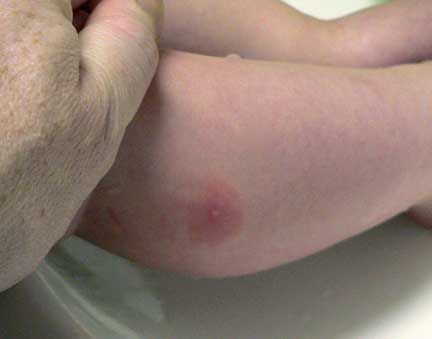
Plantain herb is one of the first herbs that I ever used, and our success in treating poison ivy really fueled my interest in learning about herbal remedies. At the bottom of this post, you’ll find the answer to the pop quiz from my last post on identifying plantain. And stay tuned! My next post in this series is going to be a free printable notebook page about plantain and its uses.
Plantain History:
Plantain has been used since ancient times for snake bites, mad dog bites, and a variety of internal diseases. It was brought to America by colonists, and they spread quickly throughout the New World. Native Americans quickly discovered the usefulness of the plantain herb, and quickly adapted it to new uses with their already broad knowledge of herbal medicine. (1)
History records a black slave being granted a handsome reward and his freedom by the colonial assembly of South Carolina in return for teaching them how to treat rattlesnake bites with plantain. Shakespeare even mentions plantain in Romeo and Juliet as being good for wounds.

Plantain Use:
The L. Plantago family contains 265 known species. These plants contain compounds which:
- reduce swelling (astringent)
- reduces pain and itching (analgesic)
- are healing for mucous membranes (demulcent) -think canker sores
- protect and soothe the skin (emollient)
- expel phlegm (expectorants)
- helps the bladder/kidneys remove excess fluids (diuretic)
- antibacterials
- antiviral
- eliminates/destroys toxins (detoxicant)- think poison ivy, bee stings, venom, etc.
How to use Plantain herb in real life:
Plantain herb can be used internally and externally for many different conditions. Basically, anything dealing with a toxin or venom, bleeding, rashes, or swelling…slap some plantain on it quick! I have personally used it to remedy poison ivy/rashes, mosquito bites in children who have allergies to them, and bee stings.
A friend of mine used it to heal a nasty spider bite. It is on my short list of must have herbs for first aid. I use it fresh in the spring, summer and fall, and keep a stash of dried plantain on hand as well for the winter. I also keep a small jar of tincture for emergency use.
Want to see it in action? My baby girl got stung by a yellow jacket last year on an outing. I picked her up and ran to a patch of plantain, chewed up a few leaves, and held it on the spot right away. When we got home, about 15 minutes later, I found a second sting on her other leg which hadn’t been treated with plantain.

The treated spot was stained a dark greenish/brown from the herbs, but the redness was only about the size of an english pea. The white pustule of vemon was about the size of a sesame seed, and stood above the skin like a pimple.

The untreated sting, by contrast was surrounded by a quarter sized hot red swelling. The pustule on this one was the size of an English pea, and flush with/embedded in the skin. That’s quite a difference in only 15 minutes or so of treatment with plantain! I treated both wounds with more plantain compresses and then salve, and she healed up within just a few days with no complaints or itching.
I have found that plantain works best when it’s applied as soon as possible after a bite or exposure to poison ivy. The toxins are still fresh on the skin, and haven’t done as much damage the cells and soak in as much, so you’ll get maximum effect of the herb is used right away. For this reason, I carry it with me in my first aid kit in my car, as well as a small container of salve in my purse. And I always keep an eye out for it when we’re out in nature, just in case.
Contraindications: (when not to use plantain)
Not everyone responds the same way to Plantain. One of my friends says that it does nothing for her mosquito bites, but works great on Poison Ivy rashes. Some people are allergic to Plantain…so be sure to check sensativity with a topical application before ingesting it. If you’re allergic to psyllium or Metamucil, then you’ve got a Plantain sensitivity. Plantain is great for making blood clot, but should not be used by those who are taking blood thinners or are prone to blood clots.
More to come!
In researching for this post, I’ve learned even more about the uses and actions of plantain…I can’t wait to do more experimenting and develop some plantain recipes to share!
OK…how did you do on the plantain herb identfication pop quiz? Here is the answer: there are two different varieties of plantain in the photo, highlighted below.

Want to know more about plantain? My next post will include a free notebook page with more uses and ideas about using plantain herb.
1. Excerpts from Practical Herbalism: Ordinary Plants with Extraordinary Powers, Dr. Philip Fritchey
[…] or Plantain are excellent companion herbs, mixed half and half with elder in anti-inflammatory poultices or […]